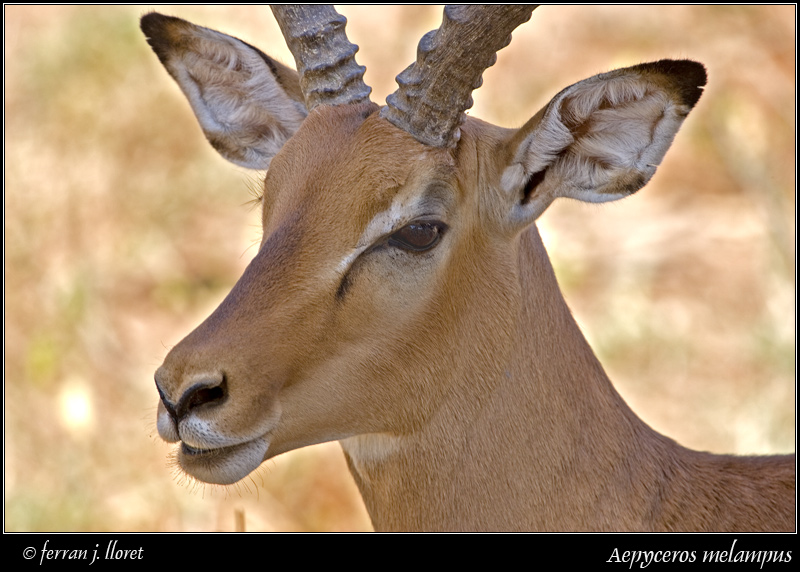An impala (Aepyceros melampus Greek aipos "high" ceros "horn" + melas "black" pous "foot") is a medium-sized African antelope. The name impala comes from the Zulu language. They are found in savannas in Kenya, Tanzania, Mozambique, Namibia, Botswana, Zambia, Zimbabwe, southern Angola and northeastern South Africa.
Impala stand between 75 to 95 centimetres tall at the shoulder and weigh 40 to 80 kilograms. They are reddish-brown in color with lighter flanks, and have white underbellies. Males have lyre-shaped horns which can reach up to 90 centimetres in length. When frightened or startled the whole herd starts leaping about in order to confuse their predator. They can jump distances more than 9 meters (30 feet) and 2.5 meters (8 feet) high. They are prey to almost every large predator.
Impala are among the dominant species in many savannas. They are gregarious creatures and are usually found in herds, often a male with many females, although a doe will leave the herd to give birth. Their food consists of a mixture of grasses and leaves. Herds will use specific areas for their excrement. Impala are active during both day and night.
Young male impala form bachelor herds of around thirty individuals. Females and young form herds of up to two hundred individuals. Mature males hold territories, and lead any female herds that wander into their territory.
Information source
IUCN information
This photo is taken in Samburu National reserve, in Kenya. This shot was taken full frame.
|
